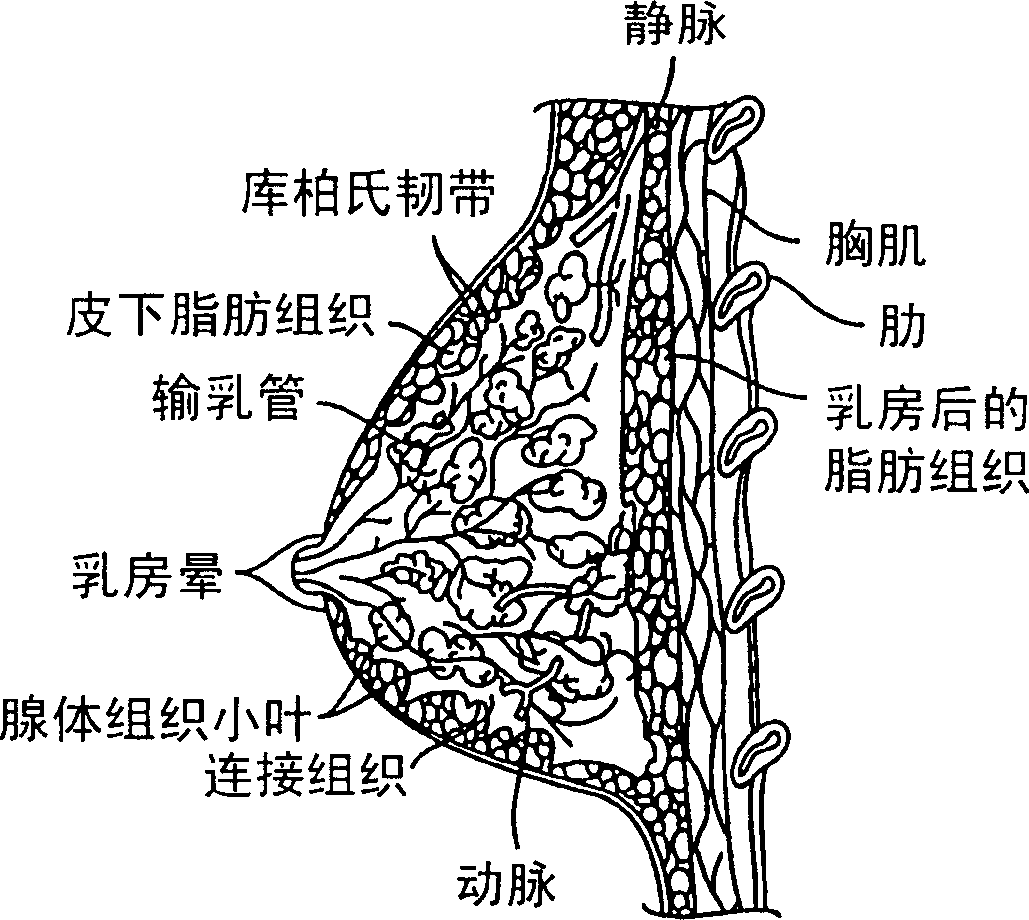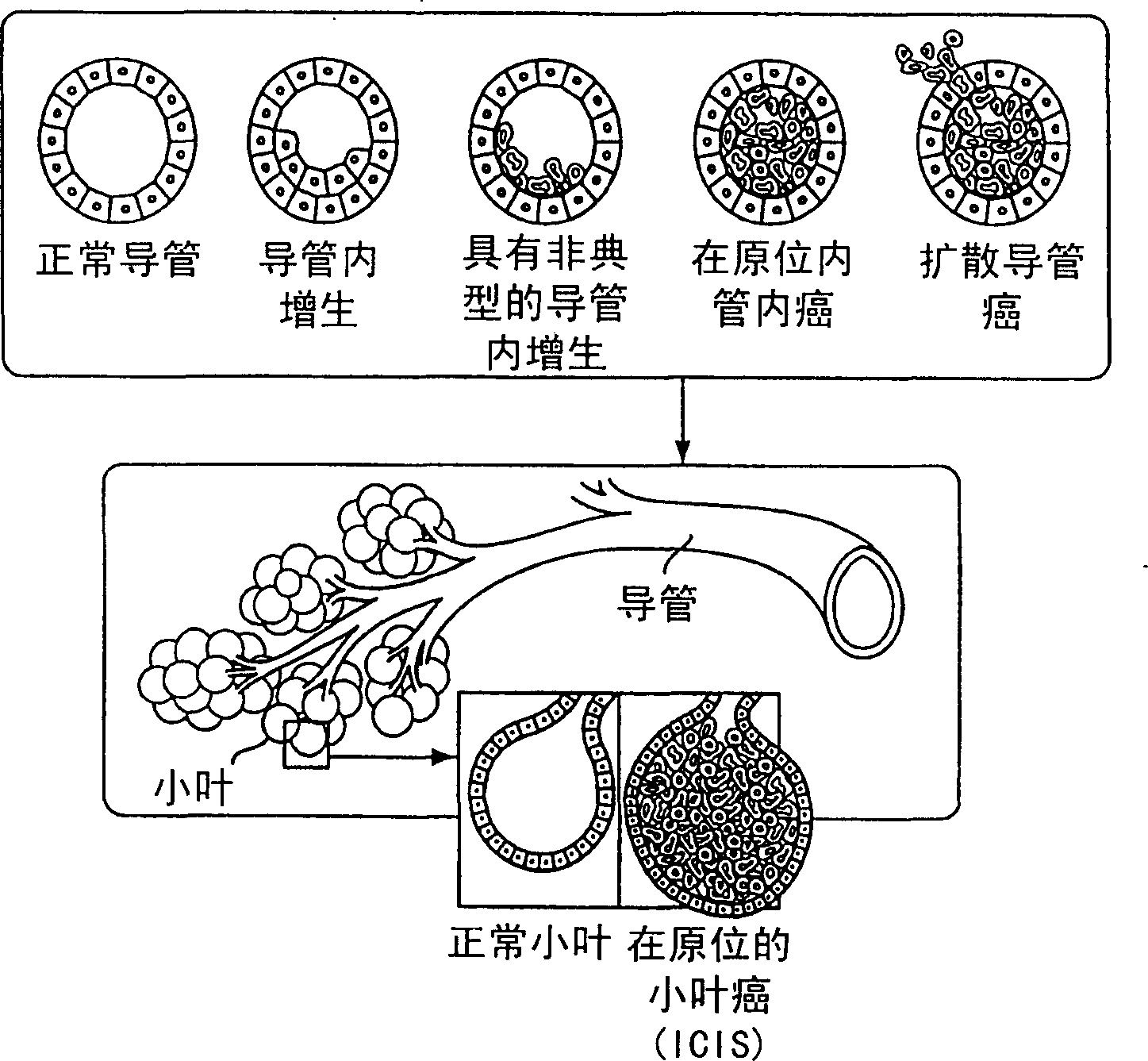Method and apparatus for treating breast lesions using microwaves
A microwave and breast technology, used in microwave therapy, cooling appliances for therapeutic treatments, heating appliances for therapeutic treatments, etc., to avoid damage
- Summary
- Abstract
- Description
- Claims
- Application Information
AI Technical Summary
Problems solved by technology
Method used
Image
Examples
Embodiment Construction
[0043] Dielectric Properties of Breast Tissue
[0044] Such as figure 1 Lateral view of female breast shown (Mammography--A User's Guide, National Council on Radiation Protection and Measurements, NCRP Report No. 85, 1 August 1987, 6 pp), the amount of glandular and fatty tissue within the breast can vary widely, from rudimentary fatty tissue to very thick glandular tissue. Breast cancer cells are watery cells that usually form in figure 2 In the lobe of lactiferous duct and glandular tissue shown, (adapted from Dr. SusanLove's Breast Book, Addison Wesley, Mass, 1990, pp. 191-196 ., 1990, pp.191-196)). The first appearance of abnormal cells in the ducts is intraductal hyperplasia, followed by intraductal hyperplasia with atipia. When these ducts are nearly filled, the condition is often considered to be carcinoma in situ (DCIS). All three conditions are precancerous. Finally, when ductal cancer breaks through the duct wall, the damage is spread ductal carcinoma. Cancer...
PUM
| Property | Measurement | Unit |
|---|---|---|
| Thickness | aaaaa | aaaaa |
| Diameter | aaaaa | aaaaa |
Abstract
Description
Claims
Application Information
 Login to View More
Login to View More - R&D
- Intellectual Property
- Life Sciences
- Materials
- Tech Scout
- Unparalleled Data Quality
- Higher Quality Content
- 60% Fewer Hallucinations
Browse by: Latest US Patents, China's latest patents, Technical Efficacy Thesaurus, Application Domain, Technology Topic, Popular Technical Reports.
© 2025 PatSnap. All rights reserved.Legal|Privacy policy|Modern Slavery Act Transparency Statement|Sitemap|About US| Contact US: help@patsnap.com



